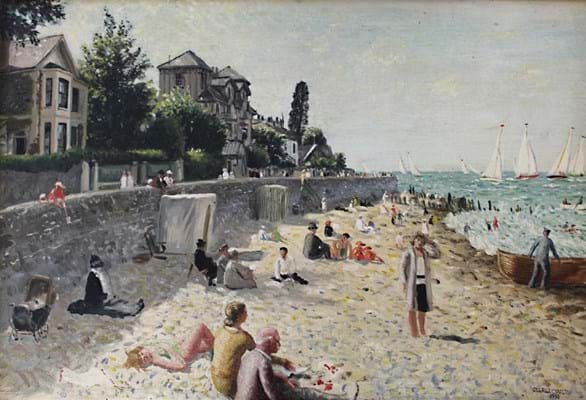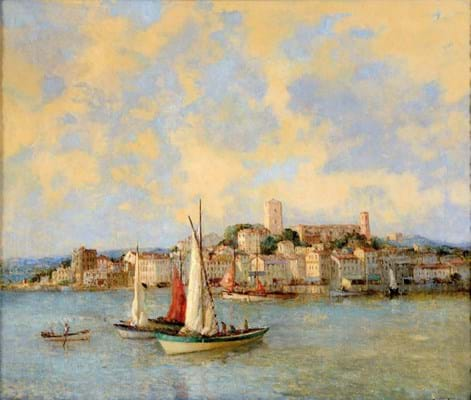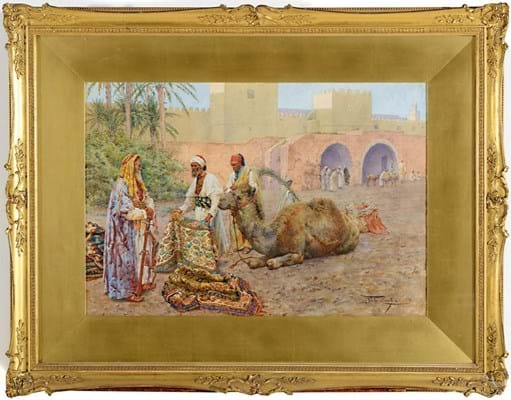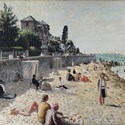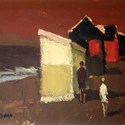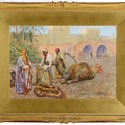“At the moment, we are in a strange twilight zone. People are not yet feeling the pinch of the rise in living costs and those who still have money to spend on luxury items continue to buy with reassuring eagerness,” said Richard Kay, head of pictures at Lawrences (22% buyer’s premium) of Crewkerne.
“We will feel fortunate indeed if we get to the end of the year with the same expression of enthusiasm we have had in our January and April sales. There is a feeling things are going to tighten up.”
Kay’s latest picture sale on April 7 offered 220 lots, 81% of which sold, to total £179,000. The sum was less than the “false high” of January’s auction – which shipped £260,000 worth of pictures – but was nonetheless indicative of the sector’s current healthiness and more in line with the department’s expectations.
The regular auctions – offering pictures and prints from the 16th century to the present day – tend to be a good barometer for the middle and lower reaches of the market.
“The reassuring thing I would say is that no matter what the jitters might be about Brexit or rising inflation, there are still plenty of people who want to buy sensibly priced attractive, affordable art,” said Kay.
An area of the sale that performed surprisingly well was the Victorian art section. This was for bright pictures that had “sparkle or a bit of sunlight”, said Kay. Not the muddy so-called ‘gravy and vegetable’ landscapes that remain a hard sell.
He added: “There are limitations, I’m not saying it’s rising across the board, but there are more people out there looking for that kind of thing.”
Low estimates
Ruthlessly low estimates probably played a key part in this increased demand in Crewkerne. Examples included an Alfred de Breanski Junior (1877-1945) scene of a Scottish glen that sold beyond hopes at £2500. A vast Henry Moore (1831-95) seascape, which in recent years would have been difficult to sell, got away comfortably over estimate at £3550.
Among the highlights was a bright and well-composed 1930s beach scene on the Isle of Wight by George Charlton (1899-1979).
Considered an unusually fine example by the artist, the privately consigned 19½in x 2ft 5in (49.5 x 74.5cm) oil on board sold to a private buyer for £1750, against a £500-800 guide. The price is the highest for the artist at auction for a decade, according to the Art Sales Index.
“What this picture shows is that when you offer the market something that’s unusually good in the context of that artist’s oeuvre, bidders will disregard what they think they ought to pay,” said Kay.
Another coastal work to do well was William Lee Hankey’s (1869-1952)Cannes, Port Et Suquet, a fresh-to-the-market and well-preserved sun-soaked seascape bought by a local consignor some 20 years ago. Although it is considered a little laboured in places and lacks “the fluency and lightness of touch” of Hankey’s best pictures, the 2ft 1in x 2ft 5in (61 x 74cm) oil on canvas bettered its £3000-4000 estimate to sell for £4400.
Beach Huts, a rather foreboding oil on board by popular Welsh artist Donald McIntyre (1923-2009), also attracted interest when it went under the hammer. Measuring just 6 x 7½in (16 x 19cm), it depicts two figures by a beach hut beneath a hot terracotta-red sky. Not considered a particularly commercial work by the artist, it was entered with an estimate of £700- 1000, but went on to sell for £3400 to a private collector in Dorset.
The sale’s top lots were a pair of oriental pictures by the Italian artist Giulio Rosati (1857-1917). Showing carpet traders in an Arab square, the 14 x 20in (35 x 52cm) watercolours were good examples of the artist’s style but were distinguished by their impeccable condition and came in their original frames.
Offered separately and given punchy £8000-12,000 guides, they both sold on bottom estimate to the same private collector in Wales despite enquiries from the orientalist trade.


